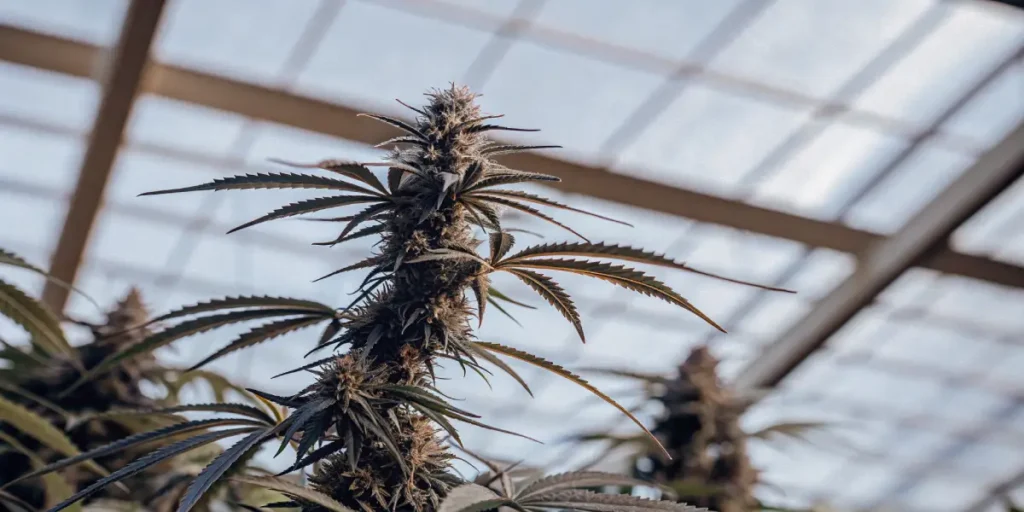
How Laticifers Impact Cannabis Strain Quality
Laticifers are specialized cells in plants that produce latex, a milky fluid. In cannabis, they play a crucial role in resin production. Resin is the sticky substance that contains cannabinoids like THC and CBD, which are responsible for the plant’s psychoactive and medicinal properties. Knowing how laticifers impact cannabis strain quality is essential, as without them, cannabis plants would produce significantly less resin, ultimately affecting the overall potency, aroma, and value of the strain.
When growing cannabis, one might overlook the laticifers’ contribution. However, these cells significantly influence the plant’s potency and flavor. By knowing how laticifers impact cannabis strain quality, growers can select and cultivate strains that maximize these benefits. This not only enhances the experience for consumers but also ensures a higher market value for the crop.
Recommended Strains
For example, strains like Gelato from Blimburn Seeds are renowned for their high resin production. This is directly linked to the presence and efficiency of laticifers. By choosing strains with robust laticifer activity, growers can ensure their plants have a higher resin output, leading to a more potent and flavorful product.
Laticifers Role in Cannabis Strain Development
In the development of cannabis strains, laticifers play a pivotal role by influencing resin production. Resin not only contains cannabinoids but also terpenes, which contribute to the aroma and taste of cannabis. A plant with active laticifers will have a more pronounced smell and taste, which is a key quality factor for many users.
Strains such as Zkittlez from Blimburn Seeds are celebrated for their vibrant terpenes and rich flavors. These characteristics are enhanced by efficient laticifer activity. As a grower, focusing on laticifers during the selection process can lead to the development of superior strains with desirable traits.
Laticifers role in cannabis strain development is also critical in determining the adaptability of the plant to different growing environments. Strains with active laticifers often demonstrate enhanced resilience, allowing them to thrive in various conditions while maintaining high resin production. This adaptability is vital for growers seeking to maximize yield and quality under diverse agricultural settings.
Furthermore, laticifers contribute to the structural integrity of cannabis plants, supporting healthy growth patterns essential for optimal development. By maintaining strong laticifer networks, growers can ensure their plants develop robust and productive canopies, leading to increased light absorption and, consequently, higher photosynthetic efficiency. This holistic approach to cannabis cultivation underscores the significant influence of laticifers on the overall quality of the crop.
Influence of Laticifers on Cannabis Quality
Laticifers directly influence cannabis quality by affecting the plant’s ability to produce resin. Resin is the lifeblood of cannabis, determining its potency and therapeutic qualities. A plant with healthy laticifers will generally have higher concentrations of THC and CBD, making it more effective for both recreational and medicinal use.
The influence of laticifers on cannabis quality is evident in strains like Blue Dream from Blimburn Seeds. Known for its balanced effects and soothing properties, the strain owes much of its reputation to the laticifers that enhance its cannabinoid profile. By selecting strains with active laticifers, growers can optimize the therapeutic potential of their harvest.
An additional aspect of the influence of laticifers on cannabis quality is their role in enhancing the plant’s natural defenses. Strains with robust laticifers tend to exhibit greater resistance to environmental stressors, such as drought and temperature fluctuations, ensuring consistent quality throughout the growing cycle. This resilience reduces the risk of crop failure and supports sustainable cultivation practices.
Moreover, knowing how laticifers impact cannabis strain quality allows breeders to selectively cross plants with superior laticifer activity. This selective breeding can lead to the creation of new strains with optimized potency, flavor, and aroma profiles, meeting the evolving demands of consumers. This targeted approach highlights the essential contribution of laticifers to the cannabis industry’s growth and innovation.
Promos & Deals
Laticifers and Resin Production in Cannabis
Resin production in cannabis is closely linked to laticifer activity. These cells not only produce latex but also facilitate the storage and secretion of resin. This process is vital for enhancing the plant’s defensive mechanisms against pests, while also boosting the psychoactive and therapeutic properties of the strain.
In practice, a grower might notice that plants with robust laticifer networks tend to have a stickier texture. This stickiness is an indicator of high resin content. By choosing strains that are known for their resinous buds, such as those offered by Blimburn Seeds, growers can ensure they are cultivating cannabis with optimal laticifer functionality.
Laticifers and resin production in cannabis are intricately linked, as efficient laticifer activity can lead to increased resin yield and quality. This relationship is particularly important for producers of cannabis concentrates, where high resin output translates into more potent extracts. By prioritizing laticifer functionality, growers can enhance their product offerings in this rapidly growing segment of the cannabis market.
Additionally, the function of laticifers in resin production extends to influencing the harvest timing and post-harvest processing techniques. Strains with optimal laticifer activity may mature faster, allowing for earlier harvests and more efficient production cycles. Knowing the dynamics between laticifers and resin production can thus provide growers with strategic advantages in maximizing both yield and quality.

FAQs on Laticifers and Cannabis Strain Quality
What are laticifers and why are they important in cannabis?
Laticifers are specialized plant cells that produce latex, a sticky fluid. In cannabis, they are crucial for resin production, which affects the plant’s potency and flavor. By contributing to the concentration of cannabinoids and terpenes, laticifers directly impact the quality and desirability of a cannabis strain.
Knowing their function helps growers select strains that will yield higher resin content. This is vital for both recreational and medicinal purposes, as it enhances the plant’s psychoactive effects and therapeutic benefits.
Furthermore, laticifers play a significant role in determining the environmental adaptability of cannabis strains. Their activity can influence the plant’s response to various stressors, thereby impacting overall crop viability and quality. By focusing on how laticifers impact cannabis strain quality, growers can make informed decisions about strain selection and cultivation practices.
Besides to potency and adaptability, laticifers contribute to the aesthetic appeal of cannabis by enhancing the visual and tactile characteristics of the buds. Plants with high laticifer activity often produce visually appealing, resin-coated flowers that attract consumers seeking premium quality products. This visual allure, combined with enhanced potency, underscores the multifaceted importance of laticifers in cannabis cultivation.
How do laticifers contribute to cannabis potency?
Laticifers contribute to potency by facilitating resin production, where cannabinoids such as THC and CBD are concentrated. A strain with efficient laticifers will generally have a higher cannabinoid content, making it more potent and effective for users.
This contribution to potency is why many growers focus on selecting strains with robust laticifer activity. It ensures that the final product is strong, flavorful, and meets consumer expectations for quality.
Moreover, laticifers contribution to cannabis potency extends to the enhancement of secondary metabolites such as terpenes. These compounds not only add to the flavor and aroma but can also synergistically boost the effects of cannabinoids, resulting in a more profound and well-rounded user experience. This synergy is a key factor in the popularity of strains with high laticifer activity.
Besides, by knowing the mechanisms of laticifer activity, breeders can develop cultivation techniques that optimize these cellular processes. Such techniques can include controlled stress applications or nutrient adjustments that activate laticifers, thereby increasing the overall potency and appeal of the cannabis strain. This strategic cultivation approach further emphasizes the importance of laticifers in producing high-quality cannabis.
Can laticifers influence the aroma and taste of cannabis strains?
Yes, laticifers can significantly influence the aroma and taste of cannabis strains. They facilitate the production of terpenes, which are responsible for the plant’s unique smell and flavor. Strains with active laticifers will often have a more pronounced and desirable aroma.
This is why strains like Zkittlez or Gelato are favored for their vibrant terpene profiles. By focusing on laticifers, growers can cultivate plants with enhanced sensory properties, appealing to both recreational users and connoisseurs.
Besides to enhancing aroma and taste, laticifers also contribute to the preservation of these qualities during post-harvest processing. Strains with robust laticifer activity tend to retain their terpene profiles better, resulting in products that maintain their sensory appeal from cultivation to consumption. This retention is crucial for ensuring consumer satisfaction and market competitiveness.
Furthermore, the influence of laticifers on aroma and taste underscores the importance of these cells in differentiating cannabis strains in a crowded market. Unique terpene profiles created by active laticifers can become a defining characteristic of a strain, making it stand out to consumers seeking specific flavor and aromatic experiences. This differentiation highlights the integral role of laticifers in shaping cannabis strain quality and market identity.
What are some examples of strains with optimal laticifer activity?
Examples of strains with optimal laticifer activity include Blue Dream, Gelato, and Zkittlez, all available at Blimburn Seeds. These strains are known for their high resin production and rich terpene profiles, making them popular choices among growers and users alike.
By choosing such strains, growers can ensure they cultivate plants with superior quality, characterized by robust potency, flavor, and aroma. This ultimately leads to a more satisfying experience for consumers.
Additionally, these strains exemplify how laticifers impact cannabis strain quality by offering a balanced combination of potency and sensory appeal. They serve as benchmarks for growers aiming to produce top-tier cannabis, demonstrating the advantages of selecting strains with well-developed laticifer networks.
Moreover, the success of these strains in the market illustrates the commercial viability of focusing on laticifer activity. By prioritizing strains with proven laticifer efficiency, growers can enhance their product lineup’s attractiveness to consumers, thereby increasing market share and profitability. This strategic focus highlights the importance of laticifers in driving both quality and commercial success in the cannabis industry.
How can growers enhance laticifer activity in their cannabis plants?
Growers can enhance laticifer activity by ensuring optimal growing conditions, such as proper lighting, temperature, and nutrition. Providing a stress-free environment allows laticifers to function effectively, leading to increased resin production.
Additionally, selecting strains known for their strong laticifer networks can naturally enhance this activity. By focusing on these factors, growers can maximize the quality and yield of their cannabis plants.
Implementing advanced cultivation techniques, such as precision irrigation and targeted nutrient management, can further boost laticifer activity. These methods ensure that laticifers receive the necessary resources to produce high-quality resin efficiently, contributing to overall cannabis strain quality and laticifer impact.
Furthermore, ongoing research into genetic markers associated with laticifer efficiency can provide growers with new tools for selecting and breeding strains with enhanced laticifer functionality. By staying informed about the latest advancements, growers can continuously improve their cultivation practices to produce superior cannabis strains, thereby meeting the ever-evolving demands of the market.



















